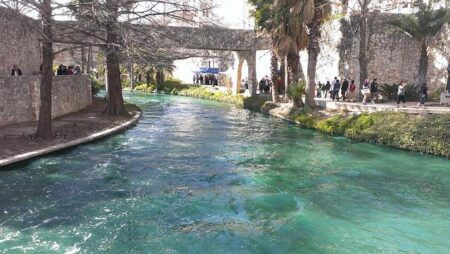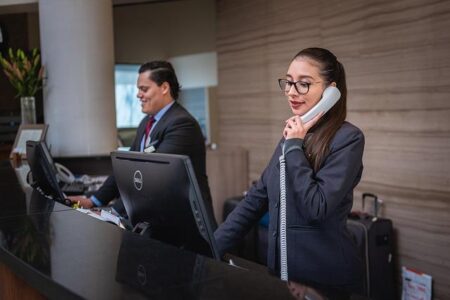Mariachi Music Finds a New Stage in San Antonio’s Educational Landscape
San Antonio, TX – Traditionally celebrated for its spirited nightlife and festive mariachi performances, the city is witnessing a remarkable transformation as mariachi music increasingly becomes an integral part of school programs. Rooted deeply in Mexican-American culture, San Antonio’s educators and musicians are joining forces to embed mariachi traditions within classrooms. This innovative cultural integration not only safeguards an invaluable musical legacy but also enriches students’ educational experiences by fostering artistic growth, community involvement, and cultural pride. The San Antonio Report delves into how mariachi’s educational emergence is reshaping both the music scene and the city’s cultural identity.
Mariachi Programs Flourish Across San Antonio Schools
Across San Antonio, schools are embracing mariachi music as a vibrant expression of cultural heritage and student creativity. Incorporating traditional instruments like the vihuela, guitarrĂłn, and trumpet, alongside vocal training, these programs are igniting enthusiasm and cultural connection among students. Local mariachi musicians often volunteer as mentors, fostering intergenerational learning and community ties. This resurgence is reflected in growing participation rates and the establishment of mariachi ensembles as key components of after-school activities.
Factors fueling this growth include:
- After-school mariachi ensemble programs
- Partnerships with cultural institutions and local artists
- Incorporation of mariachi history and theory into music classes
- Annual student mariachi competitions promoting engagement
| School | Program Launch | Student Enrollment | Mariachi Ensembles |
|---|---|---|---|
| Alamo Heights High School | 2018 | 150 | 3 |
| East Central Middle School | 2020 | 90 | 2 |
| Southwest Elementary | 2022 | 70 | 1 |
Connecting Cultural Roots with Academic Success Through Mariachi
Mariachi education in San Antonio is more than music instruction; it serves as a dynamic platform where cultural heritage and academic achievement converge. Students engaged in mariachi programs not only learn to play traditional instruments but also enhance competencies in subjects such as mathematics, language arts, and social studies. The storytelling embedded in mariachi lyrics offers a rich context for exploring Mexican-American history and identity, fostering both cultural pride and intellectual growth.
Teachers report that mariachi classes contribute to increased student motivation, better attendance, and a stronger sense of community. The following benefits have been documented in schools with active mariachi curricula:
- Improved language proficiency through song analysis and narrative exercises
- Heightened cultural sensitivity encouraging inclusivity and respect
- Enhanced collaboration skills developed through ensemble performances
- Positive behavioral outcomes linked to increased engagement and self-esteem
| Metric | Improvement | Data Source |
|---|---|---|
| Student Attendance | 15% Increase | San Antonio School District Reports (2023) |
| Language Arts Performance | 12% Growth | Standardized Test Scores |
| Student Engagement | 20% Rise | Teacher Feedback Surveys |
Overcoming Obstacles and Embracing Opportunities in Mariachi Education
While the expansion of mariachi programs in schools presents exciting possibilities, it also brings challenges. Funding remains a significant barrier, as acquiring authentic mariachi instruments-such as violins, guitarrĂłns, and vihuelas-can be expensive. Additionally, there is a scarcity of educators with specialized mariachi expertise, complicating efforts to scale programs. Cultural misunderstandings and language differences sometimes require sensitive navigation to ensure the heritage is represented authentically and respectfully.
Nevertheless, these challenges open doors for innovative solutions. Community partnerships can alleviate financial constraints through sponsorships and donations. Professional development initiatives and artist residencies help cultivate qualified instructors. Moreover, integrating mariachi into interdisciplinary curricula enriches students’ learning experiences by connecting music with history and social studies.
| Challenges | Potential Solutions |
|---|---|
| Limited funding for instruments and materials | Engage local businesses and cultural organizations for support |
| Shortage of trained mariachi educators | Develop teacher training programs and artist-in-residence opportunities |
| Cultural misinterpretations and language barriers | Create curricula emphasizing authentic cultural representation |
| Competition for school resources | Integrate mariachi with other subjects to maximize resource use |
Strategies to Expand and Sustain Mariachi Education in San Antonio
Ensuring the longevity and growth of mariachi education requires strategic investment and community collaboration. Securing funding from municipal sources, educational grants, and private donors is critical. Schools should design tiered programs that accommodate learners at various skill levels, fostering continuous development. Partnerships with professional mariachi ensembles and cultural groups can provide mentorship and real-world performance experiences, enriching student learning.
Teacher preparation and resource accessibility are equally vital. Below is a summary of essential elements for successful mariachi programs:
| Component | Recommended Action | Anticipated Benefit |
|---|---|---|
| Instructor Certification | Offer specialized mariachi pedagogy workshops | Educators equipped with cultural and musical expertise |
| Instrument Availability | Establish community lending libraries for instruments | Broader student access and participation |
| Curriculum Enrichment | Integrate historical context and diverse mariachi repertoire | Deeper cultural understanding and engagement |
| Community Involvement | Host regular public performances and cultural events | Increased visibility and community support |
- Utilize digital tools to offer virtual lessons and share resources, expanding reach to remote learners.
- Encourage interdisciplinary projects linking mariachi studies with arts, history, and language curricula.
- Promote family engagement through workshops and festivals, fostering a supportive learning environment.
Conclusion: Mariachi’s Evolving Role in San Antonio’s Cultural and Educational Fabric
As mariachi music transcends its traditional venues, its integration into San Antonio’s schools represents a profound cultural evolution. By embedding this vibrant art form within educational settings, the city is not only preserving a cherished musical tradition but also nurturing a new generation of culturally aware, confident, and creative students. This transformation highlights mariachi’s enduring ability to unite communities, inspire artistic expression, and cultivate pride in cultural identity well beyond the stage.




